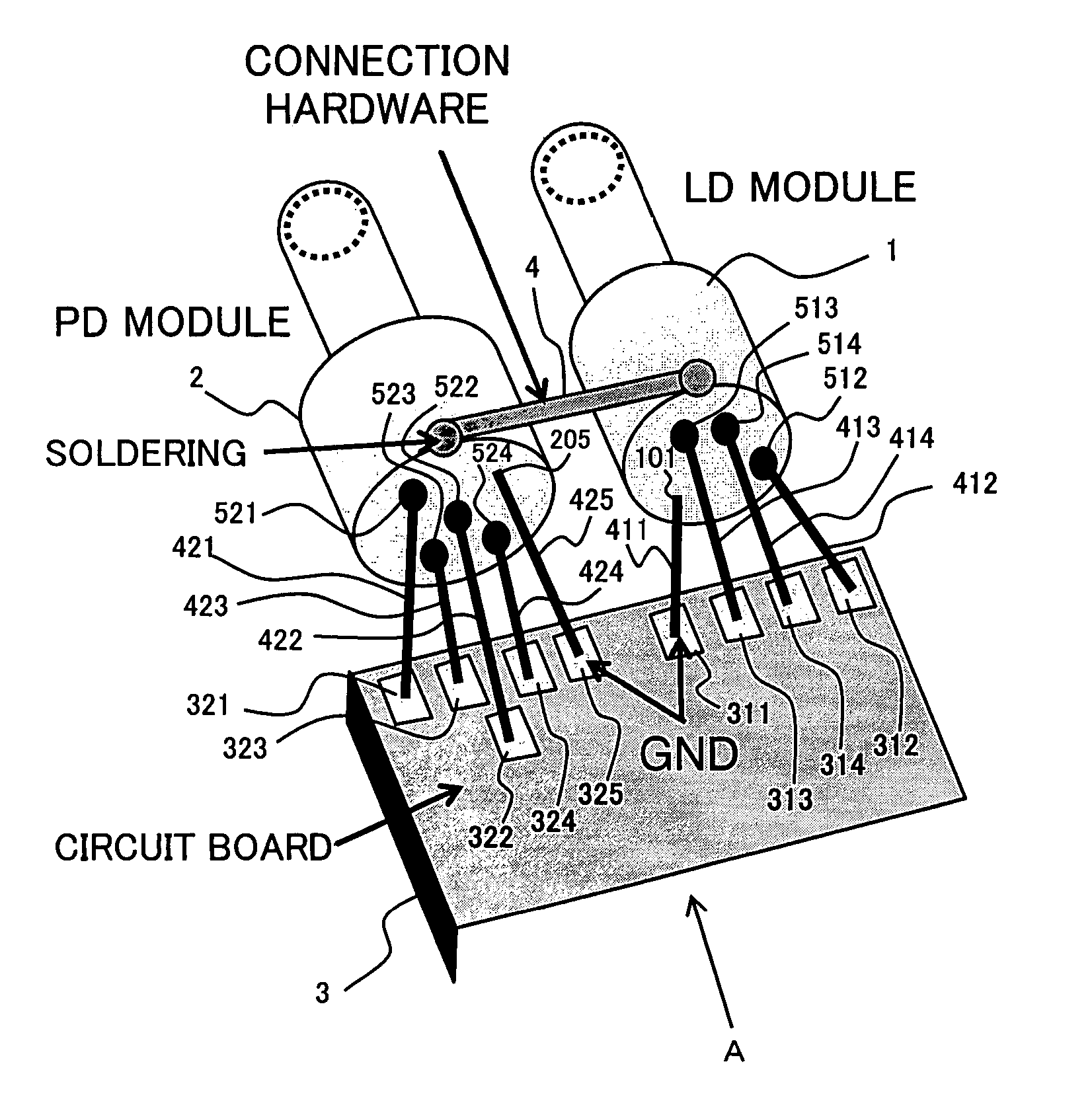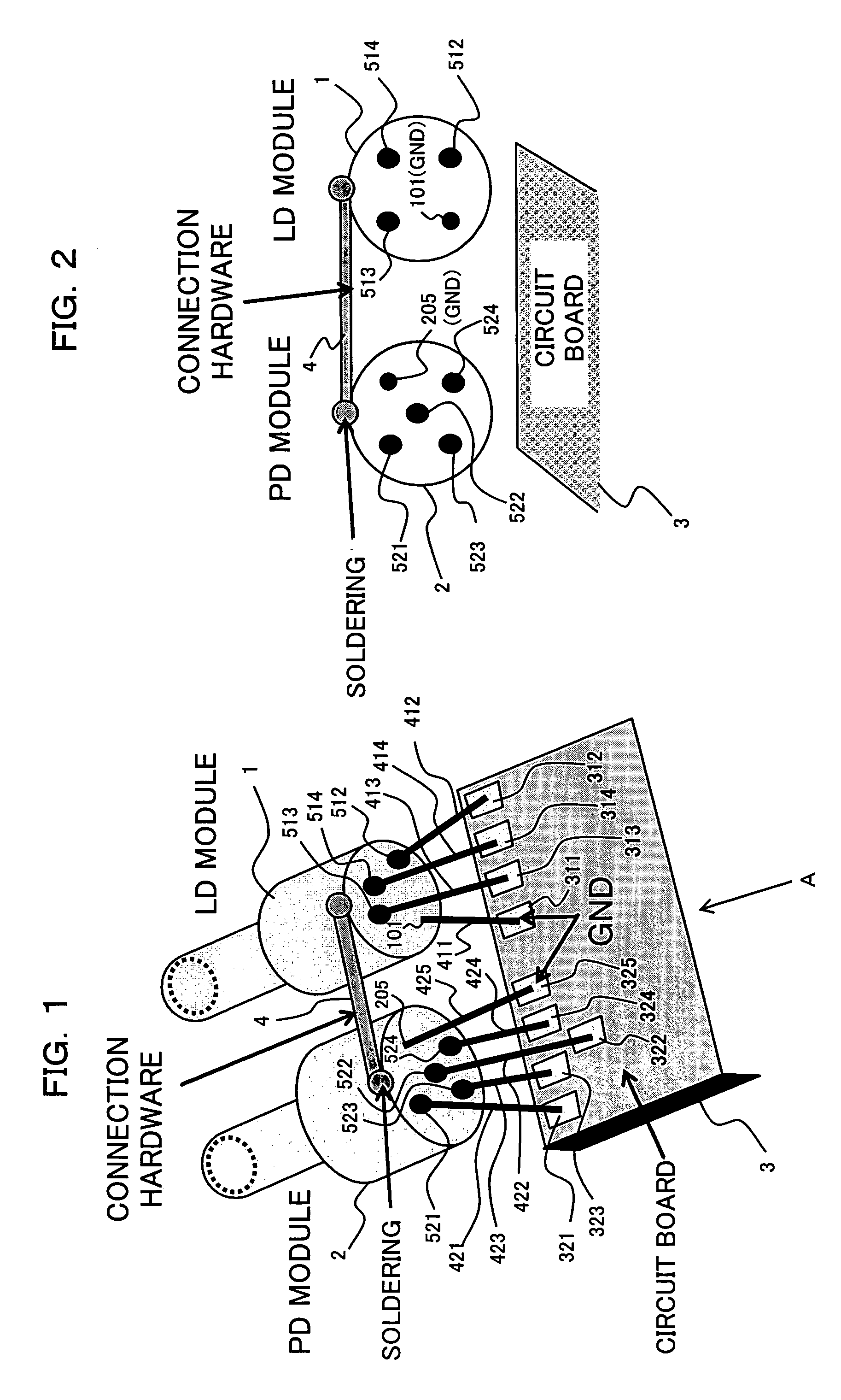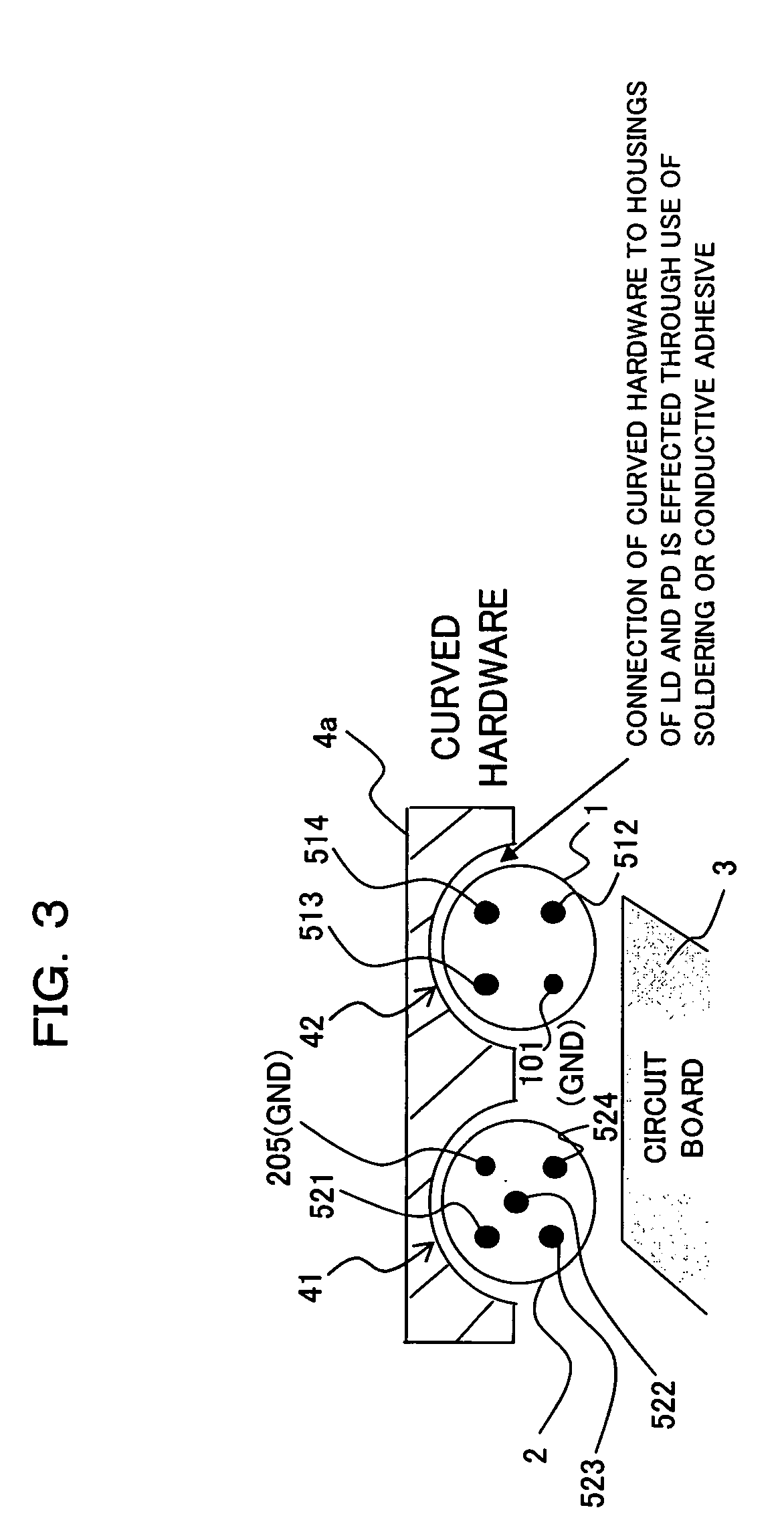Optical transceiver module
a technology of optical transceiver and module, which is applied in the direction of coupling device connection, semiconductor/solid-state device details, instruments, etc., can solve the problems of no decisive measures taken in connection with optical transceiver modules, gnd potential becomes unstable with an increase in transmission speed, and ld and pd can be stabilized, suppressing electrical crosstalk developing, and enhancing gnd potential.
- Summary
- Abstract
- Description
- Claims
- Application Information
AI Technical Summary
Benefits of technology
Problems solved by technology
Method used
Image
Examples
first embodiment
[A] Descriptions of a First Embodiment
[0041]FIG. 1 is a diagrammatic perspective view showing the configuration of an optical transceiver module serving as a first embodiment of the present invention. FIG. 2 is a diagrammatic front view of the optical transceiver module when viewed in a direction of arrow A shown in FIG. 1. As shown in FIGS. 1 and 2, the optical transceiver module of the present invention comprises a CAN-type LD module 1 which has an LD (a light-emitting element) provided in a cylindrical metal housing and acts as an optical transmission module; a CAN-type PD module 2 which has a PD (a light-receiving element) provided in a cylindrical metal housing and acts as an optical receiving module; and a circuit board (a drive circuit board) 3 for driving the LD module 1 and the PD module 2. In the same manner as in the case of the optical transceiver module described by reference to FIGS. 10 and 11, the LD module 1 is connected to the circuit board 3 (LD connection terminal...
second embodiment
[B] Descriptions of a Second Embodiment
[0051]FIG. 4 is a diagrammatic perspective view showing the configuration of an optical transceiver module serving as a second embodiment of the present invention, and FIG. 5 is a diagrammatic front view of the optical transceiver module when viewed in a direction of arrow A shown in FIG. 4. As shown in FIGS. 4 and 5, the optical transceiver module of the present invention comprises the CAN-type LD module 1; the CAN-type PD module 2; the circuit board (drive circuit board) 3; and another circuit board (sub-circuit board) 5.
[0052] The modules 1, 2 are mounted on one surface of the sub-board (module mount board) 5. Formed in the other surface of the sub-board are hole sections (through holes) 51 to 54 and 61 to 65 for use with (and which are aligned with) the lead pins 411 to 414 and 421 to 425 of the respective modules 1, 2. A GND pattern 50 having a wide area is formed over the entirety or substantially the entirety of other surface of the sub...
second modification
(B2) Descriptions of a Second Modification
[0062]FIG. 7 is a diagrammatic front view showing the configuration of a second modification of the optical transceiver module described by reference to FIGS. 4 and 5. In the optical transceiver module shown in FIG. 7, provided on the sub-board 5 are the LD anode electrode pattern 55; an electrode section 56 (LD cathode electrode pattern) to which the LD cathode lead pin 513 (LD cathode terminal 103) is to be connected by means of soldering or the like; an electrode pattern 57 to be used for connecting the LD anode electrode pattern 55 to the LD cathode electrode pattern 56; a capacitor 7 interposed between the LD anode electrode pattern 55 and the electrode pattern 57 by means of soldering or the like; a resistor 8 interposed between the LD cathode electrode 56 and the electrode pattern 57 by means of soldering or the like; and the GND pattern 50 formed so as to avoid the electrode patterns 55, 56, 57, the capacitor 7, and the resistor 8.
[...
PUM
 Login to View More
Login to View More Abstract
Description
Claims
Application Information
 Login to View More
Login to View More - R&D
- Intellectual Property
- Life Sciences
- Materials
- Tech Scout
- Unparalleled Data Quality
- Higher Quality Content
- 60% Fewer Hallucinations
Browse by: Latest US Patents, China's latest patents, Technical Efficacy Thesaurus, Application Domain, Technology Topic, Popular Technical Reports.
© 2025 PatSnap. All rights reserved.Legal|Privacy policy|Modern Slavery Act Transparency Statement|Sitemap|About US| Contact US: help@patsnap.com



